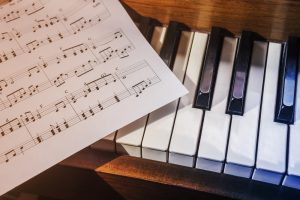Table of Contents
Come join us now, and enjoy playing your beloved music and browse through great scores of every level and styles!
Can’t find the songbook you’re looking for? Please, email us at: sheetmusiclibrarypdf@gmail.com We’d like to help you!
Sorabji: In the Hothouse (from Two Piano Pieces) sheet music, Noten, partitura, spartiti 楽譜

Best Sheet Music download from our Library.
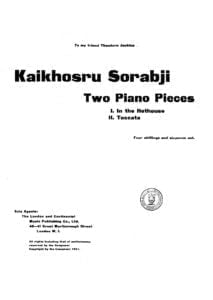
Please, subscribe to our Library.
If you are already a subscriber, please, check our NEW SCORES’ page every month for new sheet music. THANK YOU!
Browse in the Library:
Or browse in the categories menus & download the Library Catalog PDF:
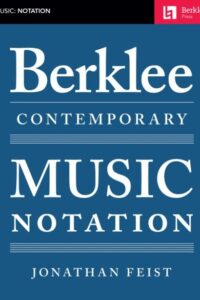
Who was Sorabji?
Kaikhosru Shapurji Sorabji: The Hermit of Modernist Maximalism
In the often-crowded pantheon of 20th-century composers, Kaikhosru Shapurji Sorabji (1892-1988) occupies a unique and enigmatic niche. A composer of staggering ambition, labyrinthine complexity, and self-imposed isolation, Sorabji crafted some of the most monumental, technically demanding, and stylistically idiosyncratic music ever conceived. His work, largely ignored during his lifetime and still challenging audiences today, represents a singular path through modernism – one defined by maximalism, intricate ornamentation, transcendental virtuosity, and a fierce, almost hermetic, independence.

Biography: A Self-Forged Identity
- Birth & Heritage: Born Leon Dudley Sorabji on August 14, 1892, in Chingford, Essex, England. His father was a Parsi engineer from India (thus the Persian-derived name Sorabji), and his mother was English-Spanish. This mixed heritage profoundly shaped his sense of identity, though he felt alienated from both cultures.
- The Name: Around 1914, he legally changed his name to Kaikhosru Shapurji Sorabji. “Kaikhosru” and “Shapurji” were Persian names chosen for their resonance and connection to ancient Persian history and Zoroastrianism, reflecting his deliberate construction of a unique persona.
- Musical Formation: Largely self-taught. He received some piano lessons in his youth but had no formal composition training. His musical education came through voracious listening, score study (especially Bach, Liszt, Busoni, Debussy, Ravel, Scriabin, Szymanowski, Medtner), and wide reading in literature, philosophy, and the occult.
- Early Career & Criticism: Worked as a music critic (under the pseudonym “S. Godfrey”) for outlets like The New Age and The New English Weekly from the 1910s to the 1930s. His critiques were famously acerbic, insightful, and often scathing, particularly targeting English musical provincialism and composers he deemed mediocre (which was most of them).
- The Recluse: Deeply disillusioned by the musical establishment and critical reception to his early performances (which were rare and often controversial), Sorabji gradually withdrew from public musical life starting in the late 1930s. After his mother’s death in 1940, he retreated almost completely to his secluded home “The Eye” in Corfe Castle, Dorset, where he lived with his companion, Reginald Norman Best, until his death. He forbade performances of his music for decades.
- The Ban Lifted: In 1976, pressured by a growing underground interest spearheaded by pianists like Yonty Solomon and Alistair Hinton (who later became his literary executor), Sorabji reluctantly lifted the ban on performances, provided he approved the performer.
- Death: Sorabji died on October 15, 1988, in Winfrith Newburgh, Dorset, leaving behind a colossal legacy of unpublished manuscripts.
Works: Monuments of Sound

Sorabji’s output is vast and overwhelmingly dominated by solo piano music, though he also composed orchestral works, chamber music, organ symphonies, and songs. His works are renowned for their extreme length, density, and technical difficulty, pushing the boundaries of playability.
- Key Masterpieces:
- Opus Clavicembalisticum (1930): His most famous (or infamous) work. A colossal 4+ hour piano epic in 12 movements (including fugues, passacaglias, toccatas, cadenzas), often considered one of the most challenging solo piano works ever written. A summit of contrapuntal complexity and virtuosic display.
- Symphonic Variations for Piano (1935-37): Another monumental work, exploring vast variation forms over an extended duration.
- Sequentia Cyclica super “Dies iræ” ex Missa pro Defunctis (1948-49): A massive cycle of 27 variations on the “Dies Irae” chant, demonstrating his intricate contrapuntal and transformative skills.
- 100 Transcendental Studies (1940-44): True to their name, these studies explore extreme technical and expressive demands far beyond those of Liszt or Chopin.
- Symphonies for Solo Piano: Several exist, including his Symphony No. 2 (“Jāmī”), blending orchestral textures and scope onto the piano.
- Gulistān – Nocturne for Piano (1940): A prime example of his lush, perfumed, and incredibly intricate “Persian”-inspired style.
- Concerti: He wrote several for solo piano and orchestra (e.g., Concerto per suonare da me solo e senza orchestra, per divertirsi), which are symphonic in scale and require superhuman virtuosity.
- Symphonies for Organ: Vast, complex works exploring the sonic possibilities of the instrument.
Analysis of Style: A Universe of Complexity
Sorabji’s style is instantly recognizable yet difficult to categorize. It synthesizes diverse elements into a unique and overwhelming whole:
- Maximalism: This is the defining characteristic. Sorabji embraced extremes:
- Length: Works lasting several hours are common.
- Density: Highly polyphonic textures, often with multiple independent melodic lines woven together in complex counterpoint (influenced by Bach, Busoni).
- Virtuosity: Demands transcendental technique – cascades of notes, complex polyrhythms, wide leaps, immense power, and extreme delicacy. He wrote as if the pianist had four hands.
- Ornamentation: Baroque-like ornamentation (trills, mordents, turns, grace notes) is ubiquitous, often layered and integral to the texture, creating shimmering, kaleidoscopic surfaces (influenced by Scriabin, Szymanowski, Middle Eastern/Persian music).
- Dynamic Range: From barely audible whispers to thunderous, percussive climaxes.
- Harmony: A complex fusion:
- Rooted in late-Romantic chromaticism (Scriabin, Szymanowski, early Schoenberg).
- Freely employed dissonance, clusters, and intricate chord structures.
- Often retained a sense of tonal centers or polarity, even amidst dense chromaticism (unlike strict atonality).
- Incorporated modal inflections, sometimes evoking Persian or Spanish flavors.
- Rhythm: Highly complex and fluid:
- Frequent use of polyrhythms (multiple simultaneous rhythms), cross-rhythms, and nested tuplets (triplets within quintuplets, etc.).
- Tempo often fluctuates wildly, requiring immense control.
- A sense of improvisatory freedom within highly structured forms.
- Form: Often large-scale, complex, and idiosyncratic:
- Favored variations (passacaglias, chaconnes), fugues, toccatas, and intricate multi-movement structures (like the Opus Clavicembalisticum).
- Forms were often expansive and cumulative, building through layered repetition and intensification rather than traditional development.
- Architecture was paramount, even in the densest textures.
- Influences (Assimilated, Not Imitated):
- Ferruccio Busoni: The most profound influence. Busoni’s ideas of “Young Classicism,” the transcendental potential of the piano, the fusion of Bachian counterpoint with modern harmony, and the concept of “Junge Klassizität” resonated deeply. Sorabji dedicated his Opus Clavicembalisticum to Busoni’s memory.
- Franz Liszt: Virtuosity, thematic transformation, large-scale forms, and the symphonic poem concept translated to piano.
- J.S. Bach: Contrapuntal mastery, structural rigor, and the use of forms like fugue and passacaglia.
- Alexander Scriabin: Mysticism, harmonic language, dense textures, and ecstatic climaxes.
- Karol Szymanowski: Sensuous harmony, intricate ornamentation (especially in the “Persian” inspired works like Métopes and Masques), and voluptuous textures.
- Debussy & Ravel: Color, texture, exoticism, and pianistic refinement.
- Mediterranean & Persian Cultures: While not authentically recreating these styles, he evoked their essence through ornamentation, melodic turns, and titles (Gulistān, Jāmī), reflecting his fascination with his Persian heritage and the wider Orient.
- Aesthetic: Sorabji’s music aimed for:
- Transcendence: Pushing beyond perceived limits of instrument, performer, and listener.
- Luxuriance & Opulence: A rich, sensual, almost decadent sound world.
- Intellectual Rigor: Underlying the sensual surface was meticulous structural planning.
- Individualism: A complete rejection of prevailing trends (serialism, neoclassicism, minimalism) in favor of his own uncompromising vision.
Legacy: From Obscurity to Cult Status
Sorabji’s legacy is complex and evolving:
- Decades of Neglect: His self-imposed exile and performance ban meant his music was virtually unknown outside a tiny circle for nearly 40 years. Manuscripts were inaccessible, unplayable, and unpublished.
- The Pioneers (1970s-): The lifting of the ban sparked interest. Pianists like Yonty Solomon, Michael Habermann, Geoffrey Douglas Madge (who made the first complete recording of Opus Clavicembalisticum in 1977), and later Marc-André Hamelin, Jonathan Powell, Fredrik Ullén, and Ronald Stevenson began the monumental task of learning, performing, and recording his works. This required immense dedication and technical prowess.
- Publication & Scholarship: The Sorabji Archive, established by Alistair Hinton (Sorabji’s literary executor), has been crucial in cataloging, editing, and facilitating the publication of scores (primarily by Dover Publications and The Sorabji Music Archive). Scholarly work is gradually increasing.
- Recordings Renaissance: The CD era and digital distribution (YouTube, streaming) have been transformative. Dedicated labels (Altarus, BIS, Toccata Classics, Piano Classics) have released numerous recordings, making this once-inaccessible music available globally. Complete cycles of the 100 Studies and other major works are underway.
- The Cult & The Challenge: Sorabji remains a “composer’s composer” and a cult figure. His music is not mainstream concert fare due to its extreme demands and duration. However, it commands deep respect and fascination among pianists, composers, and listeners drawn to its unique sound world and uncompromising vision. He is seen as the ultimate iconoclast, forging a path utterly independent of 20th-century musical fashions.
- Influence: His direct influence on other composers is hard to pinpoint due to his obscurity, but he stands as a powerful symbol of uncompromising artistic integrity and the exploration of extreme complexity and virtuosity. Composers interested in maximalism, intricate counterpoint, or pushing pianistic limits inevitably encounter his shadow.
- Copyright Controversy: The complex copyright status of his works (involving the Sorabji Archive and publishers) has sometimes been a point of friction within the community of performers and scholars seeking access.
Sorabji: The Solitary Giant
Kaikhosru Shapurji Sorabji was a true original. He inhabited a musical universe entirely of his own making, synthesizing diverse influences into a style characterized by unparalleled complexity, sensuous opulence, and transcendental ambition. His deliberate withdrawal from the world ensured decades of obscurity, but the dedication of pioneering performers and the power of recording technology have brought his extraordinary soundscapes to light. While his music remains challenging and demanding, it offers unparalleled rewards: a journey into a world of labyrinthine beauty, overwhelming power, and intellectual fascination. Sorabji stands as a testament to the power of an utterly individual artistic vision, uncompromising in its scope and ambition, a solitary giant whose monumental creations continue to challenge and inspire. He redefined the possible for the piano and left a legacy that continues to unfold as more performers dare to scale his musical Himalayas.
“In the Hothouse” is one of Sorabji’s most evocative and frequently performed works, serving as a perfect entry point into his dense, sensuous sound world. Here’s a detailed look at this fascinating piece:
Context: Two Piano Pieces (1918)
- Composed: 1918 (early in Sorabji’s career, age 26).
- Publication: First published in 1920, making it one of the earliest Sorabji works available in print.
- The Pair: “In the Hothouse” is paired with “Toccata” – a contrasting, hyper-virtuosic, and structurally complex piece showing his Busoni/Liszt influences. “In the Hothouse” offers the sensual, atmospheric counterpoint.
- Significance: Represents Sorabji’s early mastery of texture, harmony, and evocative atmosphere. It predates his gargantuan works but already displays his unique voice.
“In the Hothouse”: A Sensory Immersion
- Title & Imagery: The title instantly conjures an environment: humid, lush, teeming with exotic, overripe plant life, heavy perfumes, and stifling, enclosed heat. Sorabji translates this sensory overload into sound.
- Form & Structure: Relatively free and rhapsodic. It unfolds as a continuous, organic stream of consciousness rather than adhering to strict classical forms. Think of it as an elaborate, decadent arabesque.
- Style & Character:
- Extreme Sensuality: This is the defining feature. The music drips with lush, complex harmonies and suffocatingly rich textures.
- Harmony: Deeply chromatic, rooted in late Scriabin and early Szymanowski. Expect dense, constantly shifting chords: augmented harmonies, whole-tone inflections, unresolved dissonances creating tension, and sudden moments of surprising consonance like shafts of light piercing foliage. It avoids traditional tonality but gravitates around implied centers.
- Texture: Thick, layered, and constantly in motion. Tremolos, trills, rapid filigree (ornamental passages), and cascading arpeggios create a shimmering, humid haze. Melodies are often embedded within this dense undergrowth rather than standing clearly apart. The writing often requires the pianist to sustain multiple layers simultaneously.
- Rhythm: Fluid and flexible, often obscured by the sheer density of notes and ornamentation. Rubato (expressive tempo fluctuations) is essential. While less overtly complex polyrhythmically than his later works, the rhythmic flow feels organic and improvisatory.
- Dynamics & Articulation: Wide dynamic range, often shifting suddenly between extremes (e.g., thunderous climaxes collapsing into fragile whispers). Articulation varies from sharp staccatos to legatissimo passages that blur together. Pedaling is crucial for sustaining the harmonic haze and creating resonance.
- Ornamentation: Quintessential early Sorabji. Trills, mordents, turns, and grace notes are not mere decoration; they are the texture, creating constant flickering movement and contributing to the claustrophobic, teeming atmosphere. This foreshadows the intricate ornamentation dominating his mature style.
- Emotional Landscape: Evokes opulence, decadence, languor, mystery, stifling heat, hidden dangers, and overwhelming sensory stimulation. There’s a sense of beauty bordering on the grotesque due to its sheer intensity.
Influences Audible in “In the Hothouse”
- Scriabin (Primary): The harmonic language (mystic chords, unresolved dissonance, ecstatic climaxes), the sensual atmosphere, and the use of trills/tremolos are deeply indebted to Scriabin’s late sonatas and poems (e.g., Vers la flamme). Sorabji pushes Scriabin’s decadence further.
- Szymanowski: The opulent textures, perfumed harmonies, and “orientalist” exoticism (though abstracted here) strongly recall Szymanowski’s “Métopes” or “Masques,” which Sorabji admired deeply.
- Debussy: The focus on atmosphere, texture, and harmonic color (whole-tone scales, parallel chords) shows Debussy’s influence, though rendered with far greater density and intensity.
- Ravel: The virtuosic filigree and lush harmonies (think “Gaspard de la Nuit,” especially “Ondine” or “Le gibet”) are a touchstone, again amplified.
- Liszt: The rhapsodic freedom and dramatic gestures hint at Liszt, though filtered through a post-Scriabinesque lens.
Performance Challenges
- Texture & Balance: Maintaining clarity amidst the dense, rapidly shifting textures is paramount. The pianist must carefully voice chords and layers to prevent muddiness while sustaining the essential harmonic haze.
- Ornamentation as Texture: Executing the constant ornamentation smoothly and evenly, integrating it into the melodic and harmonic flow rather than treating it as mere decoration.
- Dynamic Control: Navigating the extreme dynamic contrasts and sudden shifts without sounding jarring. Creating a true pianissimo shimmer within complexity is incredibly difficult.
- Rubato & Phrasing: Applying expressive tempo fluctuations naturally while maintaining the overall structural coherence and forward momentum of the rhapsodic form.
- Pedaling: Using the pedal to create resonance and blend without causing harmonic blurring or loss of rhythmic definition. Requires exceptional sensitivity.
- Stamina & Focus: While shorter than his later works (typically 12-15 minutes), the piece demands intense concentration and physical control to sustain the atmosphere and navigate the technical intricacies.
Legacy & Significance of “In the Hothouse”
- Accessibility: It remains one of Sorabji’s most “accessible” works due to its evocative title, relatively shorter duration, and concentrated expression. It’s a frequent choice for pianists introducing audiences to Sorabji.
- Blueprint: It serves as a crucial blueprint for Sorabji’s mature style, showcasing his core preoccupations: sensuality, harmonic density, intricate ornamentation as texture, and atmospheric evocation, all present in embryonic form.
- Performance History: Despite Sorabji’s later ban, “In the Hothouse” (along with the Toccata) was one of the few pieces occasionally performed during his lifetime (e.g., by Sorabji himself and pianist Reginald Paul) and became a key work for the pioneering generation post-1976 (Yonty Solomon, Michael Habermann, Marc-André Hamelin, Jonathan Powell, Fredrik Ullén).
- Gateway Piece: It functions as a vital “gateway drug” into Sorabji’s world. Its success in conveying its intense atmosphere often encourages listeners to explore his more monumental, complex works.
- Standalone Masterpiece: Regardless of its role as an introduction, it stands as a perfectly formed and powerful piece of early modernist piano writing, a miniature tone poem of extraordinary evocative power.
“In the Hothouse” is a sun-drenched, overripe, and intoxicating immersion into Sorabji’s unique aesthetic. It captures the essence of his sensual maximalism in a concentrated dose, showcasing his debt to Scriabin and Szymanowski while asserting his own distinct voice. Its evocative power, technical brilliance, and relative brevity ensure its enduring place as one of his most beloved and frequently performed works, offering a compelling glimpse into the hothouse of Sorabji’s extraordinary musical imagination.
| Artist or Composer / Score name | Cover | List of Contents |
|---|---|---|
| Gershwin 3 Preludes for 2 pianos (four hands ) | Gershwin – Stone – 3 Preludes for 2 pianos four hands | |
| Gershwin A Foggy Day – Jazz Masters Play Gershwin(Guitar with Tablature) |
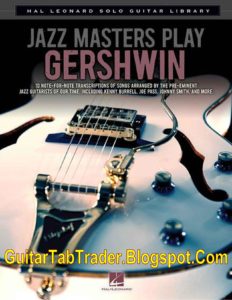 |
|
| Gershwin An American in Paris (transcription for piano solo) | Gershwin An american in Paris | |
| Gershwin Cole Porter Do_It_Again.mscz | ||
| Gershwin Do Do Do (Piano Solo) |
 |
|
| Gershwin Experiment David Cope – Prelude | Gershwin Experiment David Cope Prelude | |
| Gershwin George Gershwin Song Album Book 1 |
 |
Gershwin George Gershwin Song Album Book 1 |
| Gershwin Guitar Songbook taught by Fred Sokolow with Tablature |
 |
Gershwin Guitar Songbook taught by Fred Sokolow |
| Gershwin It ain’t necessarily so | ||
| Gershwin Jazz Interpretations |
 |
Gershwin Jazz |
| Gershwin Jeff Manookian Concert Paraphrase on I love you Porgy | Gerswhin_Jeff Manookian Concert Paraphrase on I love you Porgy | |
| Gershwin Porgy And Bess Selection (Voice & Piano) |
 |
Gershwin Porgy And Bess Selection (Voice & Piano) |
| Gershwin Rhapsody In Blue (Musescore File).mscz | ||
| Gershwin Rhapsody In Blue (Piano Solo Arr.) |
 |
|
| Gershwin Songbook (Piano Solo) |
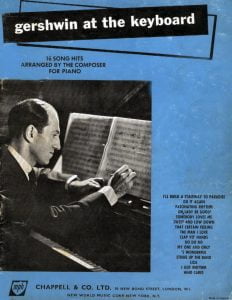 |
Gershwin–Songbook–Sheet music |
| Gershwin The Real American Folk Song (Is A Rag) |
 |
Gershwin The Real American Folk Song (Is A Rag) |
| Gershwin, George The Man I Love (Piano Solo Arr. By Percy Grainger) Sheet Music |
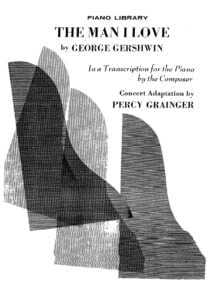 |
|
| Gershwin, George – Impromptu in Two Keys | Gershwin – Impromptu in two keys | |
| Gershwin, George I Got Rhythm Variations for piano and orchestra (Piano Score) |
 |
|
| Gershwin, George works can be found in Jazz/Standards section and also in Musicals | ||
| Gershwin’s Melodies By Yuri Markin For 4 Hands Piano | Gershwin’s Melodies By Yuri Markin For 4 Hands Piano | |
| Get Back – John Lennon And McCartney Guitar Play Along | Get Back – Lennon And Mccartney Guitar Play Along Volume 25 with embedded audio MP3 | |
| Get Over It – Dream Of Me | ||
| Gettysburg – Dawn – Randy Edelman | ||
| Getz Gilberto – Corcovado quiet nights | Corcovado | |
| Getz Gilberto Stan Getz Joao Gilberto Featuring Antonio Carlos Jobim Guitar Tablature |
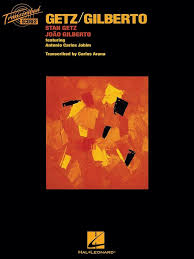 |
Getz Gilberto Stan Getz Joao Gilberto Featuring Antonio Carlos Jobim Guitar Tablature |
| GFTPM (Guitar Tab Songbook) Acoustic Classics (Tabs with Audio Mp3 Tracks Play Along)) | GFTPM – acoustic classics | |
| Ghibli Medley – Studio Ghibli film music arr. piano |
 |
|
| GHOST Alex North Unchained Melody |
 |
|
| Ghost The Musical |
 |
Ghost The Musical |
| Giacomo Moroder Take My Breath Away From The Film Top Gun (Love Theme) Piano Vocal Chords | Giacomo Moroder Take My Breath Away From The Film Top Gun (Love Theme) Piano Vocal Chords | |
| Giacomo Puccini – O Mio Babbino Caro (Guitar arr. sheet music with TABs) | Giacomo Puccini – O Mio Babbino Caro (Guitar arr. sheet music with TABs) | |
| Gian Piero Reverberi Robinson Crusoe The Adventures Of Robinson Crusoe | Gian Piero Reverberi Robinson Crusoe The Adventures Of Robinson Crusoe | |
| Gianmario Baleno Los Pasos De Paloma Argentine Tango For Piano Four Hands Sheet Music |
 |
|
| Giant Steps (Musescore File).mscz | ||
| Giant Steps Bebop And The Creators Of Modern Jazz 1945 65 (Book) By Kenny Mathieson |
 |
|
| Giant The Musical Piano Vocal Score by Michael John Lachiusa |
 |
Giant The Musical Piano Vocal Score by Michael John Lachiusa |
| Giants of Jazz Piano, The |
 |
Giants of Jazz Piano The |
| Giazotto Albinoni Adagio (In G Minor) For Solo Piano |
 |
|
| Gibran Alcocer Idea 1 | Gibran Alcocer Idea 1 | |
| Gibran Alcocer Idea 10 | Gibran Alcocer Idea 10 | |
| Gibran Alcocer Idea 15 | Gibran Alcocer Idea 15 | |
| Gibran Alcocer Idea 22 (Abridged) | Gibran Alcocer Idea 22 (Abridged) | |
| Gibran Alcocer Idea 7 | Gibran Alcocer Idea 7 | |
| Gibran Alcocer Idea 9 | Gibran Alcocer Idea 9 | |
| Gieseking, Walter & Karl Leimer – Piano Technique (Book) |
 |
|
| Gil Evans Gone Full Score As recorded by the Miles Davis Gil Evans Orchestra |
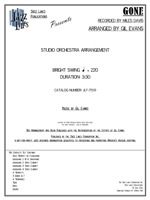 |
|
| Gilbert Sullivan – It’s Easy To Play Gilbert Sullivan |
 |
Gilbert & Sullivan – It’s Easy To Play Gilbert & Sullivan |
| Gilbert Bécaud Nathalie Piano Solo Guitar Chords | Gilbert Bécaud Nathalie Piano Solo Guitar Chords | |
| Gilbert Bécaud Quand Il Est Mort Le Poete | Gilbert Bécaud Quand Il Est Mort Le Poete | |
| Gilbert O’Sullivan – Greatest Hits (Songbook) |
 |
Gilbert O’Sullivan – Greatest Hits (Songbook) |
| Gilberto Gil – Guitar Songbook vol 2 |
 |
Gilberto Gil – Guitar Songbook vol 2 |
| Gilberto Gil vol 1 Guitar songbook |
 |
Gilberto Gil – Guitar Songbook vol 2 |
| Giles Vigneault – Un Dimanche à Kyoto (Paroles et Musique) |
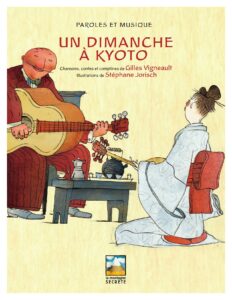 |
|
| Gillock , William Recital Collection (Intermediate to Advanced) |
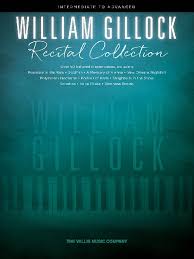 |
Gillock , William Recital Collection (Intermediate to Advanced) |
| Gillock , William Accent On Gillock Vol. 1 Piano Solos |
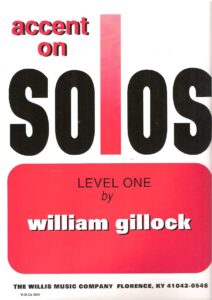 |
|
| Gillock , William Accent On Gillock Vol. 2 Piano Solos |
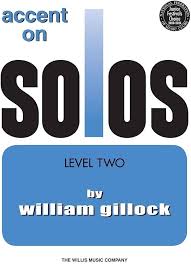 |
|
| Gillock , William Accent On Gillock Vol. 3 Piano Solos |
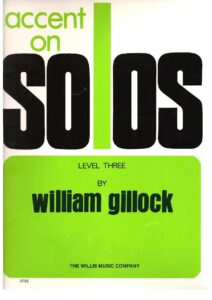 |
|
| Gillock , William Accent On Gillock Vol. 4 Piano Solos |
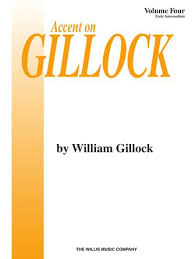 |
|
| Gillock , William Accent On Gillock Vol. 5 Piano Solos |
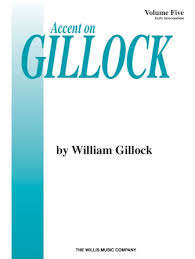 |
|
| Gillock , William Accent On Gillock Vol. 6 Piano Solos |
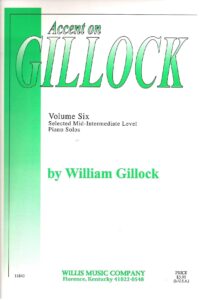 |
|
| Gillock , William Accent On Gillock Vol. 7 Piano Solos |
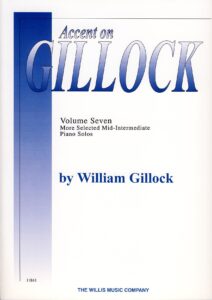 |
|
| Gillock , William Accent On Gillock Vol. 8 Piano Solos |
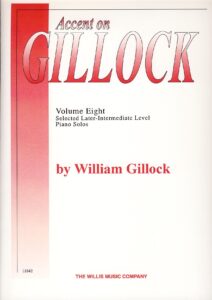 |
|
| Gillock , William – Autumn Sketch Piano Solo |
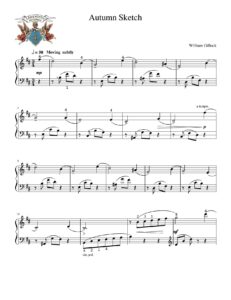 |
|
| Gillock , William – Flamenco Piano Solo |
 |
|
| Gillock , William – Holiday In Paris Piano Solo |
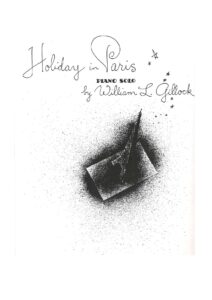 |
|
| Gillock , William Essential Collection |
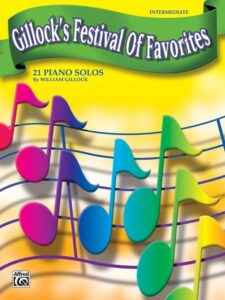 |
|
| Gillock, William 24 Romantic Piano Solos in all Major and minor Keys |
 |
Gillock, William 24 Romantic Pieces Lyric Preludes in Romantic Style |
| Gillock, William – New Orleans Nightfall Pano Solo |
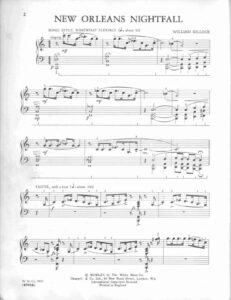 |
|
| Gillock, William French Doll William Gillock Piano Solo |
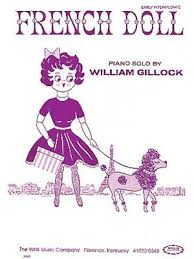 |
|
| Gillock, William Happy Birthday To You Mid Intermediate Level Piano Solo arr. by William Gillock |
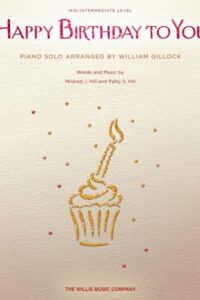 |
|
| Gillock, William Lyric Preludes In Romantic Style |
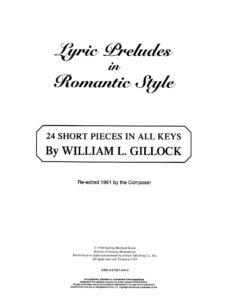 |
Gillock, William Lyric Preludes In Romantic Style |
| Gillock, William New Orleans Jazz Styles by William Gillock (piano) |
 |
New Orleans Jazz styles |
| Gillock, William Valse Etude In Romantic Style Piano Solo |
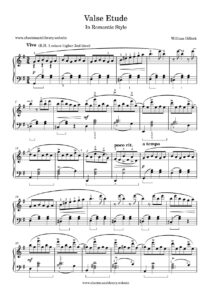 |
|
| Ginastera-Tres Piezas 3 Criolla | ||
| Ginastera, Alberto Ginastera Tres Piezas Para Piano |
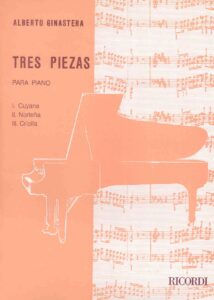 |
|
| Ginastera, Alberto Ginastera 12 American Preludes Doce Preludios Americanos | Ginastera, Alberto Ginastera 12 American Preludes Doce Preludios Americanos | |
| Ginastera, Alberto Ginastera Danzas Argentinas Opus 2 |
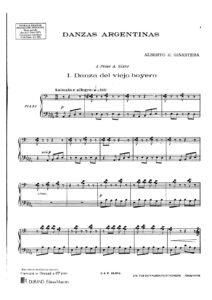 |
|
| Ginastera, Alberto Ginastera Milonga |
 |
|
| Ginastera, Alberto Ginastera Suite De Dana Criollas Op 15 Ginastera |
 |
|
| Ginastera, Alberto Sonata for guitar Op. 47 |
 |
|
| Gino Paoli Il Cielo In Una Stanza (Mina) Piano Vocal Sheet Music | Gino Paoli Il Cielo In Una Stanza (Mina) Piano Vocal Sheet Music | |
| Gino Paoli In Un Caffé Piano Vocal Sheet Music | Gino Paoli In Un Caffé Piano Vocal Sheet Music | |
| Gino Paoli Le Canzoni Interpretate Da Gino Paoli |
 |
Gino Paoli Le Canzoni Interpretate Da Gino Paoli |
| Gino Paoli Sapore Di Sale Piano Vocal Sheet Music | Gino Paoli Sapore Di Sale Piano Vocal Sheet Music | |
| Gino Paoli Sassi Piano Vocal Sheet Music | Gino Paoli Sassi Piano Vocal Sheet Music | |
| Gino Paoli Senza Fine Piano Vocal Sheet music | Gino Paoli Senza Fine Piano Vocal Sheet music | |
| Gino Paoli Ti Lascio Una Canzone Piano Vocal Sheet music | Gino Paoli Ti Lascio Una Canzone Piano Vocal Sheet music | |
| Gino Paoli Una Lunga Storia D’Amore | Gino Paoli Una Lunga Storia D Amore | |
| Gino Paoli Una Stella Di Ghiacci Piano Vocal Sheet Music (Carla Boni) | Gino Paoli Una Stella Di Ghiacci Piano Vocal Sheet Music (Carla Boni) | |
| Gino Vannelli – Brother to Brother songbook |
 |
Gino Vannelli – Brother to Brother songbook |
| Gino Vannelli Songbook Volume I Thirty Complete Scores |
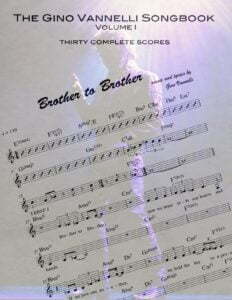 |
Gino Vannelli Songbook Volume I Thirty Complete Scores |
| Giochi infantili (La Sconosciuta OST) Ennio Morricone | ||
| Giorgia Greatest Hits – guitar |
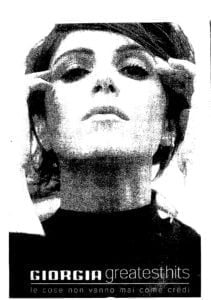 |
Giorgia Greatest Hits – guitar |
| Giorgio Moroder Midnight Express Love Theme | Giorgio Moroder Midnight Express Love Theme | |
| Giorgio Moroder Midnight Express Theme | Giorgio Moroder Midnight Express Theme | |
| Girl from Ipanema (Antonio Carlos Jobim) | ||
| Gismonti, Egberto – Complete songbook (piano vocal) |
 |
Gismonti, Egberto – Songbook |
| Gismonti, Egberto – Sete Aneis (guitar) | Gismonti, Egberto – Sete Aneis (guitar) | |
| Giveon – Heartbreak Anniversary (Piano solo sheet music) |
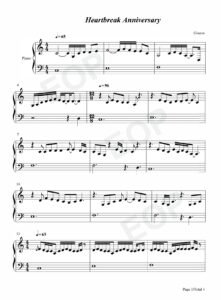 |
|
| Giya Kancheli – When Almonds Blossomed |
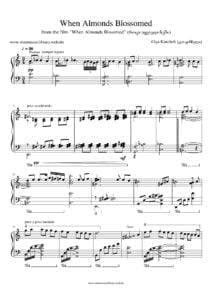 |
|
| Glad Tidings Of Great Joy (Christmas Traditional) For Two Pianos Or Piano And Voices |
 |
|
| Glad Tidings Of Great Joy (Musescore File).mscz | ||
| Glee (The Music) Showstoppers Songbook 3 |
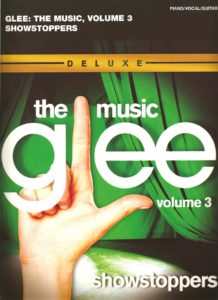 |
Glee (The Music) Shwstoppers Songbook 3 |
| Glen Miller Joe Garland – In The Mood (Piano Solo arr.) | Glen Miller Joe Garland – In The Mood (Piano Solo arr.) | |
| Glen Miller Joe Garland – In The Mood (Piano Solo arr.).mscz | ||
| Glenn Meets Wolfgang (Music from Sonate facile Mozart) by Jef Penders |
 |
|
| Glenn Miler – Bach A La Jazz | Glenn Miler – Bach A La Jazz | |
| Glenn Miller – Moonlight Serenade | Glenn Miller Moonlight Serenade Piano Vocal Guitar Chords | |
| Glenn Miller In The Mood Piano and vocal song by Joe Garland | Glenn Miller In The Mood Piano and vocal song by Joe Garland | |
| Glenn Miller Medley arr. by Naohiro Iwai |
 |
|
| Glenn Miller The Songbook Of Glenn Miller |
 |
Glenn Miller The Songbook Of Glenn Miller 1904 – 1944 —  |
| Gli Insuperabili Gruppi Degli Anni 60 sheet music collection 0f the 60s |
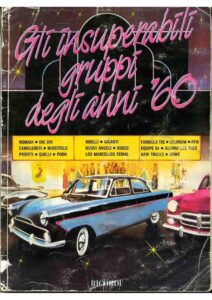 |
Gli Insuperabili Gruppi Degli Anni 60 sheet music collection 0f the 60s |
| Glinka – The Lark from A Farewell to Saint Petersburg No. 10 (Piano Solo arr.) | Glinka – The Lark from A Farewell to Saint Petersburg No. 10 (Piano Solo arr.) | |
| Glinka – The Lark From A Farewell To Saint Petersburg No. 10 (Piano Solo Arr.) (Musescore File).mscz | ||
| Glinka Nocturne in Eb Major | Glinka_-_Nocturne_in_Eb_Major | |
| Glinka Nocturne La Séparation |
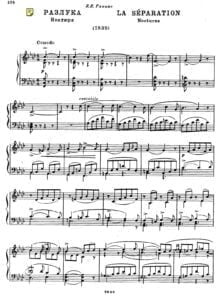 |
|
| Glinka Valse Fantaisie Original version for Piano (1839) |
 |
|
| Gloria Estefan – Anything For You | ||
| Gloria Estefan – Everlasting Love | ||
| Gloria Estefan – I Will Survive | ||
| Gloria Estefan And Miami Sound Machine Best Of Piano Vocal Guitar chords |
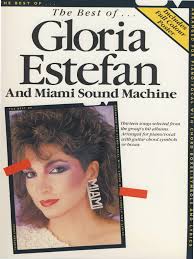 |
Gloria Estefan And Miami Sound Machine Best Of Piano Vocal Guitar chords |
| Gloria Estefan Gloria Songbook Piano Vocal Guitar Chords |
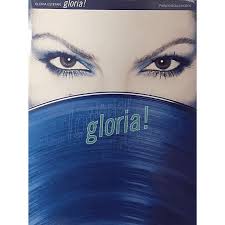 |
Gloria Estefan Gloria Songbook Piano Vocal Guitar Chords |
| Gloria Gaynor – I Will Survive | ||
| Gluck Melody from Orfeo (piano arr. Sgambati) |
 |
|
| Gluck Melody from Orfeo piano transcr. Siloti | ||
| Gluck Melody from Orpheus (arr. Bauer) | ||
| Gluck-Kempff – Ballet Music from ‘Orpheus und Euridike’ – Arr. Piano solo | ||
| Glück, das mir verblieb (Marietta’s Lied) |
 |
|
| Gnattali, Radames – Concerto no. 4 arr. for guitar and piano |
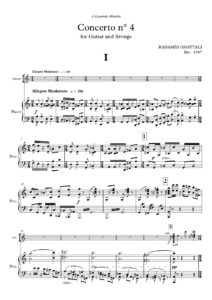 |
|
| Go West – True Colors | ||
| Gocce di memoria (Giorgia) | ||
| God Bless America And Other Patriotic Favorites Alto Sax (Irving Berlin) |
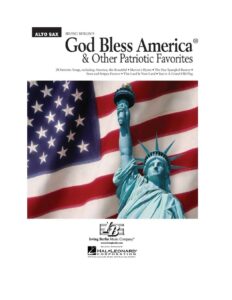 |
God Bless America And Other Patriotic Favorites Alto Sax (Irving Berlin) |
| Godspell – Day By Day | ||
| GODSPELL – The Musical by Stephen Schwartz |
 |
GODSPELL – The Musical by Stephen Schwartz |
| Golden Scores Favorites Film Selections arr. by Phillip Keveren Piano Solo |
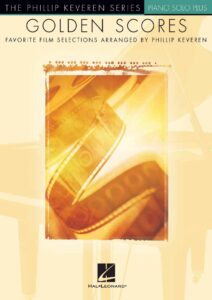 |
Golden Scores Favorites Film Selections arr. by Phillip Keveren Piano Solo |
| Golden Slumbers – Carry that Weight – The End (Beatles) | ||
| Golden Wind Main Piano Theme from Jojo’s Bizarrre Adventure |
 |
|
| Gone 1926 Benny Davis And Joe Burke Jazz Standard (Vintage sheet music) |
 |
|
| Gonzales – Chilly Gonzales Solo Piano II |
 |
Gonzales – Chilly Gonzales Solo Piano II |
| Gonzales – Prelude To A Feud Chilly Gonzales |
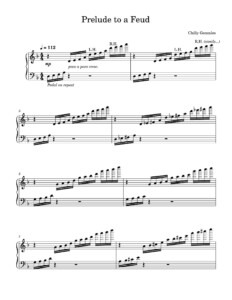 |
|
| Gonzales The Tourist |
 |
|
| Gonzales, Chilly – Solo Piano Vol 1 and 2 |
 |
Gonzales, Chilly – Solo Piano Vol 1 and 2 |
| Goo Goo Dolls – Iris | ||
| Good enough (Evanescence) | ||
| Good old-fashioned lover boy (Queen) | ||
| Goodbye Lenin! – Yann Tiersen |
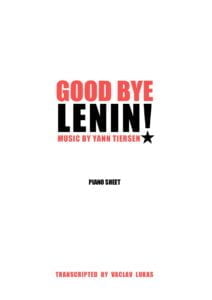 |
Goodbye Lenin! – Yann Tiersen |
| Goodbye Songs 25 Songs For Saying Farewell Piano Vocal Guitar |
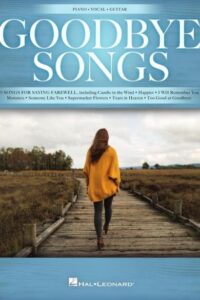 |
Goodbye Songs 25 Songs For Saying Farewell Piano Vocal Guitar |
| Goodbyes – Eat Pray Love OST (Dario Marianelli) | ||
| Goratie – Despair |
 |
